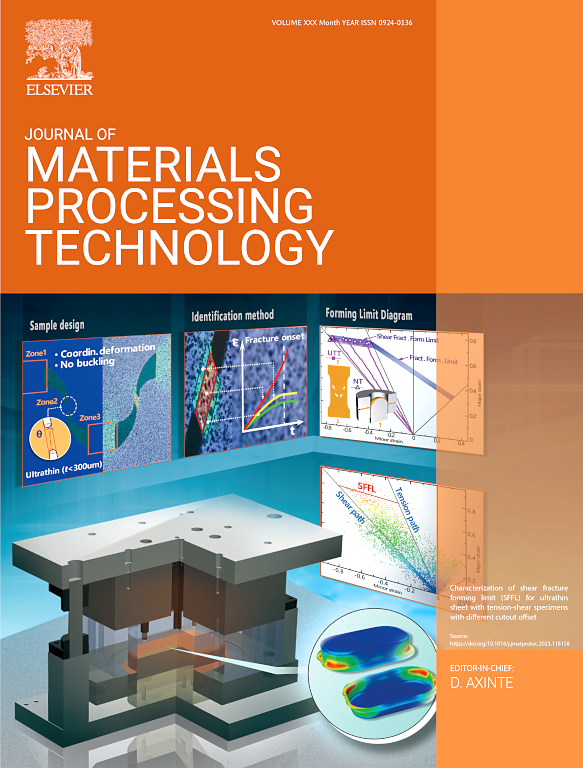Interface stair-like design and repair performance of Al-Zn-Mg-Cu aluminum alloy based on additive friction stir deposition
IF 6.7
2区 材料科学
Q1 ENGINEERING, INDUSTRIAL
Journal of Materials Processing Technology
Pub Date : 2025-02-07
DOI:10.1016/j.jmatprotec.2025.118758
引用次数: 0
Abstract
Additive Friction Stir Deposition (AFSD) is an emerging solid-state additive technology for the fabrication and repair of high-strength alloy structural components, but the affected factors of the AFSD repaired quality remain unclear. In this paper, four types of grooves on the Al-Zn-Mg-Cu alloy plate were repaired using AFSD, the design of repair grooves introduced an interface stair-like structure, and the effect of structural features on the microstructure and properties were investigated. The grain refinement of the repaired grooves with a stair-like structure is significantly higher than the common structure. The Vstair structure has the best effect on grain refinement after repair, with 93.9 % refinement compared to the substrate. The ultimate tensile strength (UTS) on the advancing side was higher than that on the returning side. The UTS of the Vstair structure is the highest after repair, reaching 294 MPa, which reaches 53.8 % of the matrix. The introduction of the stair-like structure provides additional shear action and increases the material contact area during the repair process, and the continuous dynamic recrystallization coexists with geometric dynamic recrystallization at the repair interface, which contributes to microstructure mixing and grain refinement, and further enhances the properties. This research provides insights for guiding the design and optimization of aluminum alloy repair processes.
基于添加剂搅拌摩擦沉积的Al-Zn-Mg-Cu铝合金界面阶梯设计及修复性能
添加剂搅拌摩擦沉积(AFSD)是一种新兴的用于制造和修复高强度合金结构部件的固态添加剂技术,但影响AFSD修复质量的因素尚不清楚。采用AFSD对Al-Zn-Mg-Cu合金板上的4种沟槽进行了修复,修复沟槽的设计引入了界面阶梯状结构,并研究了结构特征对修复后的组织和性能的影响。阶梯状结构修复槽的晶粒细化度明显高于普通结构。修复后Vstair组织的晶粒细化效果最好,与基体相比细化率为93.9 %。前进侧的极限抗拉强度(UTS)高于后退侧。修复后的Vstair结构的UTS最高,达到294 MPa,达到基体的53.8% %。阶梯状结构的引入为修复过程提供了额外的剪切作用,增加了材料接触面积,修复界面处的连续动态再结晶与几何动态再结晶并存,有利于组织混合和晶粒细化,进一步提高了性能。本研究为指导铝合金修复工艺的设计与优化提供了参考。
本文章由计算机程序翻译,如有差异,请以英文原文为准。
求助全文
约1分钟内获得全文
求助全文
来源期刊

Journal of Materials Processing Technology
工程技术-材料科学:综合
CiteScore
12.60
自引率
4.80%
发文量
403
审稿时长
29 days
期刊介绍:
The Journal of Materials Processing Technology covers the processing techniques used in manufacturing components from metals and other materials. The journal aims to publish full research papers of original, significant and rigorous work and so to contribute to increased production efficiency and improved component performance.
Areas of interest to the journal include:
• Casting, forming and machining
• Additive processing and joining technologies
• The evolution of material properties under the specific conditions met in manufacturing processes
• Surface engineering when it relates specifically to a manufacturing process
• Design and behavior of equipment and tools.
 求助内容:
求助内容: 应助结果提醒方式:
应助结果提醒方式:


